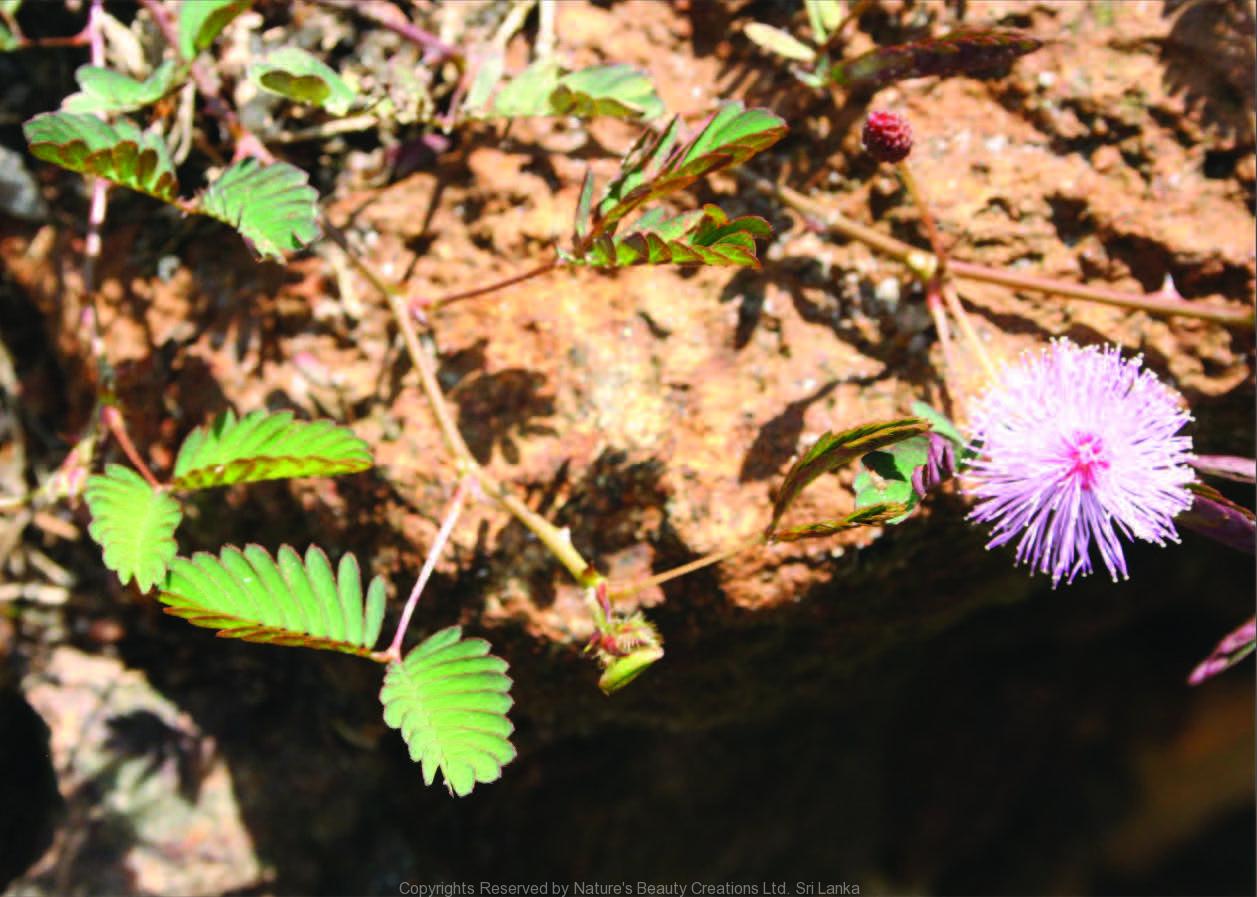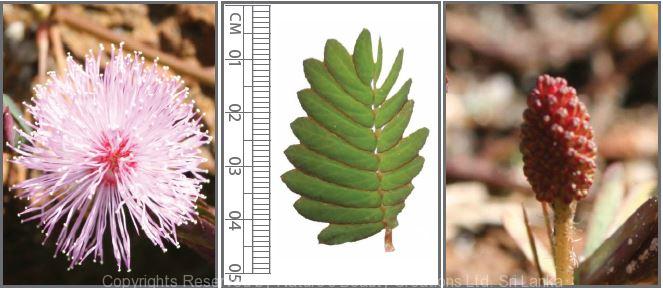

Traditional Knowledge
Useful plant parts :
Leaf, aerial part, seed and root
Uses in traditional medicine :
- Crushed leaves are applied on wounds to arrest bleeding
- Aerial parts ground with sesame oil are applied for skin diseases
- Leaves are used in glandular swellings and act as a diuretic, hydrocele, astringent, antispasmodic and sudorific
- Leaves and roots are used to treat piles and fistula
- Root and seeds have emetic properties
- Used to treat bronchitis and convulsions
Scientific Research
Chemical constituents:
Terpenoids, alkaloids, quinones, phenols, tannins, saponins, coumarins and non-protein toxic amino acid: mimosine, flavonoids and flavonoid glycosides: isorientin, orientin, isovitexin, vitexin from plant
Bioactivity :
Aqueous and methanol extracts of roots: anti-cobra venom, wound healing; aqueous alcohol and chloroform extracts of leaves: sedative, anticonvulsant, hyperglycaemic, antibacterial, antioxidative, antidepressant, hypolipidaemic
Clinical:
Root extract is effective for patients with dysfunctional heavy uterine bleeding (menorrhagia)
References : Ahmad, H. et al., (2012), Mimosa pudica L. (Laajvanti): An overview, Pharmacogn Rev, 6(12), 115-24. Amalraj, T. and Ignacimuthu, S., (2002), Hyperglycemic effect of leaves of Mimosapudica Linn, Fitoterapia, 73, 351-352. Bhandary, M. J. et al., (1995), Medical ethnobotany of the Siddis of Uttara Kannada district, Karnataka, India, Journal of Ethnopharmacology, 47, 149-158. Bum, E. N. et al., (2004), Anticonvulsant activity of Mimosa pudica Decoction, Fitoterapia, 75, 309–314. Kaur, P. et al., (2011), Phytochemical screening and antimicrobial activity of the plant extracts of Mimosa pudica L. against selected microbes, Journal of Medicinal Plants Research, 5(22), 5356-5359. Kokane, D. D. et al., (2009), Evaluation of wound healing activity of root of Mimosa pudica, J Ethnopharmacol, 124(2), 311-5. Kulothungan, S. R. and Lalitha, K., (2004), Determination of mimosine by a sensitive indirect spectrophotometric method, Talanta, 63, 635–640. Mahanta, M. and Mukherjee, A. K., (2001), Neutralisation of lethality, myotoxicity and toxic enzymes of Naja kaouthia venom by Mimosa pudica root extracts, Journal of Ethnopharmacology, 75, 55–60. Molina, M. et al., (1999), Mimosa pudica may possess antidepressant actions in the rat, Phytomedicine, 6(5), 319–323. Rajendran, R. and Krishnakumar, E., (2010), Hypolipidemic Activity of Chloroform Extract of Mimosa pudica Leaves, Avicenna J Med Biotech- nol, 2(4), 215-21. Vaidya, G. H. and Sheth, U. K., (1986), Mimosa pudica, (linn.) its medicinal value and pilot clinical use in patients with menorrhagia Ancient Science of Life, 3, 156 – 160. Zhang, J. et al., (2011), Studies on the active components and antioxidant activities of the extracts of Mimosa pudica Linn. from southern China, Pharmacogn Mag, 7(25), 35-9.
Copyrights Reserved By
Natures Beauty Creations




